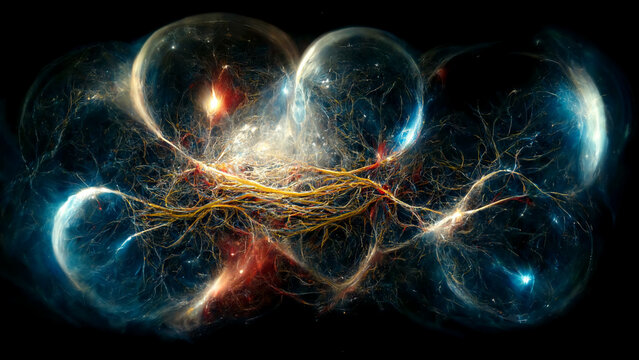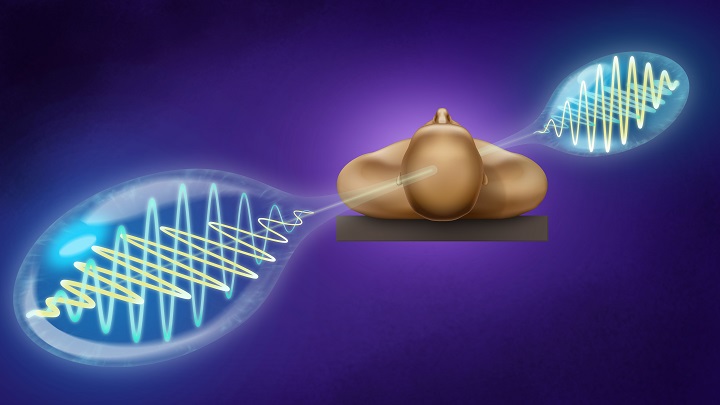More On: quantum entanglement
Brain research indicates that quantum entanglement is essential for consciousness
The evolution of comfort food
MIT's extremely precise new atomic clock can help detect dark matter
The woman who created the technology behind internet calls explains what it takes to innovate
The brain might not be so 'classical' after all.
Supercomputers can beat us at chess and do more calculations per second than the human brain. But there are some things that our brains do all the time that computers just can't do. These include figuring out what's going on, being creative, and solving problems. Our brains are incredibly powerful computers that use not only the connections between neurons but also the neurons themselves to process and understand information.
And then there is consciousness, which is like a big question mark in neuroscience. Why does it happen? How does it come from a bunch of neurons and synapses that are all mixed up? Even though they are very complicated, we are still talking about a wet bag full of molecules and electrical impulses.
Some scientists think that quantum processes, like entanglement, could help us figure out why the brain is so powerful and how it can make us conscious. Using a method to test for quantum gravity, scientists at Trinity College Dublin recently suggested that entanglement may be at work in our brains. If their results are confirmed, they could be a big step toward understanding how our brain works, including how consciousness works.

Quantum processes in the brain
We have seen some amazing signs that our brains use quantum mechanics. Some of these might help the brain use sensory information to figure out what's going on in the world. There are also isotopes in our brains whose spins change how our bodies and brains work. For instance, xenon with a spin of 1/2 can be used as an anesthetic, but xenon with no spin cannot. And different isotopes of lithium with different spins affect how rats grow and learn to be parents.
Even though there have been some interesting discoveries, most people still think of the brain as a classical system.
If the brain uses quantum processes, it would be hard to see how they work and what they do. In fact, it is very hard to find quantum processes when we don't know exactly what we're looking for. Christian Kerskens, a neuroscience researcher at Trinity and one of the paper's authors, told Big Think, "If the brain uses quantum computation, then the quantum operators it uses may be different from those we know from atomic systems." So, how can you measure a quantum system that you don't know anything about, especially since we don't have any tools to measure the strange interactions?
Lessons from quantum gravity
In quantum physics, quantum gravity is another area where we still don't know what's going on.
Physics is divided into two main areas. There is the physics of the very small microscopic world, where atoms, photons, particles, and waves interact and move in ways that are very different from what we see in the world around us. Then there is gravity, which controls how planets and stars move and keeps us humans on Earth. Quantum gravity is a way for scientists to understand the forces that govern our universe by putting all of these different realms under one theory.
Quantum gravity and quantum processes in the brain are both big unknowns, so researchers at Trinity decided to use the same method that other scientists are using to try to figure out quantum gravity.

Taking entanglement to heart
Scientists used an MRI that can detect entanglement to see if proton spins in the brain could talk to each other and become entangled through an unknown third party. The goal was to figure out how an unknown system worked, just like with quantum gravity. Kerskens said, "The unknown system might interact with known systems, like the proton spins, in the brain." "It has been shown that if the unknown system can help the known system become entangled, then the unknown must be quantum."
The researchers used an MRI to look at 40 people. Then they watched what happened and connected what was happening to the heartbeat of the patient.
The heartbeat is more than just the movement of an organ. Instead, the heart, like many other parts of our bodies, talks back and forth with the brain. Both organs send signals to each other. We can see this in the way the heart responds to things like pain, focus, and motivation. A person's heartbeat can also be linked to their short-term memory and their age.
The heartbeat potential, or HEP, is a signal that is sent out by the heart when it beats. With each peak of the HEP, the researchers saw a spike in the NMR signal, which shows how the spins of the protons were interacting with each other. This signal could be the result of entanglement, and seeing it could mean that there was a non-classical middleman.
Kerskens says that the HEP is an electrophysiological event, just like alpha or beta waves. "The HEP has something to do with consciousness because it depends on consciousness." In the same way, the signal that showed entanglement was only there when the person was awake, which was shown when two people fell asleep during the MRI. When they did that, this signal went away.
Seeing entanglement in the brain could show that the brain is not classical, as was once thought, but rather a powerful quantum system. If the results can be verified, they might show that the brain uses quantum processes. This could help us start to understand how our brain does the powerful calculations it does and how it controls consciousness.












